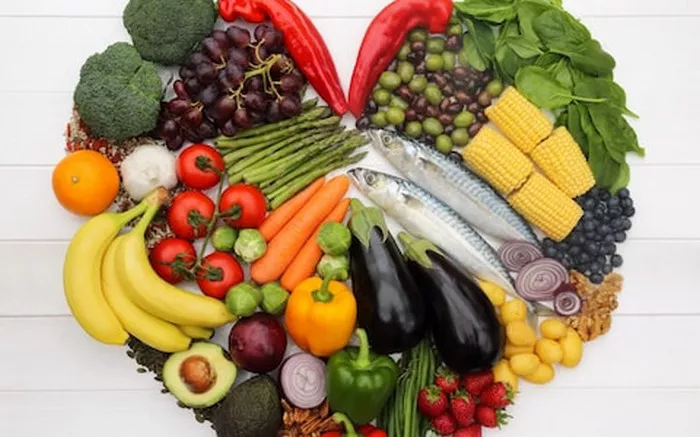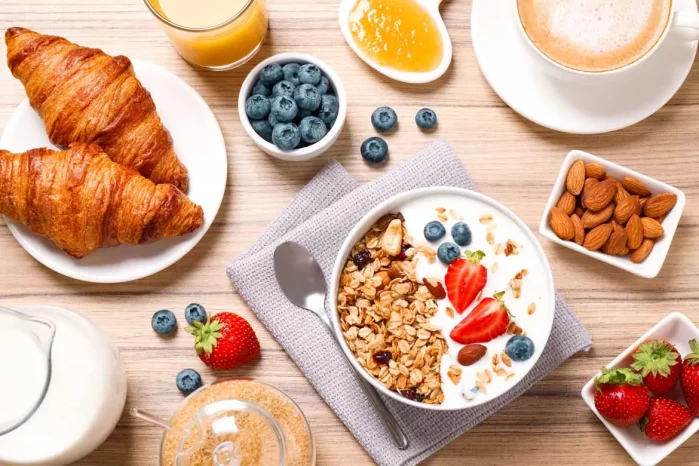A vegan diet excludes all animal products, including meat, dairy, eggs, and even honey. Vegans choose plant-based foods for a variety of reasons, including health, ethical concerns, and environmental impact. If you’re considering veganism or curious about vegan alternatives to meat, this guide will explore what vegans eat instead of meat. We’ll look at different plant-based protein sources, meat alternatives, and some common meal ideas.
Plant-Based Protein Sources
One of the most common concerns people have about vegan diets is getting enough protein. Protein is essential for muscle repair, immune function, and many other processes in the body. While meat is a well-known source of protein, there are many plant-based options available for vegans to meet their nutritional needs.
Legumes and Beans
Beans, lentils, peas, and chickpeas are rich in protein and fiber. They are excellent meat substitutes because they are versatile and can be used in many different ways. For example, chickpeas can be mashed into a dip like hummus or turned into patties for vegan “meatballs.” Lentils can be used in soups, stews, or made into veggie burgers. Black beans, kidney beans, and pinto beans are all great options as well.
Tofu and Tempeh
Tofu is made from soybeans and is a staple in many vegan diets. It has a subtle flavor and can be cooked in a variety of ways. Tofu can be grilled, stir-fried, scrambled, or even baked. Tempeh, another product made from soybeans, is fermented and has a firmer texture than tofu. It has a nutty flavor and is often used in sandwiches, salads, or stir-fries as a meat substitute. Both tofu and tempeh are packed with protein and can be marinated to take on different flavors.
Seitan
Seitan, also known as wheat gluten, is a popular meat alternative due to its chewy texture, which is similar to meat. Seitan is made by washing wheat flour dough to remove the starch, leaving behind the gluten. It is high in protein and has a texture that closely resembles chicken or beef. Seitan can be sautéed, grilled, or stir-fried and is commonly used in vegan versions of dishes like fajitas, stir-fries, or “steaks.”
Edamame
Edamame are young soybeans, and they are another great source of plant-based protein. You can find them frozen in most grocery stores. Edamame can be eaten as a snack, tossed in salads, or added to stir-fries. They are rich in protein, fiber, and various vitamins and minerals.
Nuts and Seeds
Nuts and seeds are great sources of protein, healthy fats, and fiber. Almonds, cashews, peanuts, and walnuts are just a few examples of protein-rich nuts. Seeds like chia seeds, hemp seeds, and pumpkin seeds are also packed with protein. These can be added to smoothies, oatmeal, baked goods, or enjoyed as snacks. Nut butters, like peanut butter and almond butter, are also excellent additions to a vegan diet.
Meat Alternatives: Vegan “Meat” Products
There are many plant-based products that have been designed to mimic the taste, texture, and appearance of meat. These vegan meats allow people to enjoy the flavors of meat without consuming animal products.
Vegan Burgers
Vegan burgers are one of the most popular meat alternatives. Many brands offer plant-based burgers made from ingredients like soy, peas, beans, lentils, and vegetables. Some popular vegan burger brands include Beyond Meat and Impossible Foods, which have created burgers that closely resemble traditional beef burgers in taste and texture. These burgers can be grilled, pan-fried, or baked, and are perfect for making a vegan “cheeseburger.”
Vegan Sausages
Vegan sausages are made from various plant-based ingredients, including soy protein, wheat gluten, and pea protein. They come in many flavors, from spicy Italian to smoky, and can be used in a variety of dishes, such as pasta, stir-fries, or breakfast scrambles. Some brands, like Field Roast and Tofurky, make sausages that are designed to taste like traditional meat sausages.
Vegan Bacon
For vegans who miss the crispy, savory taste of bacon, there are several plant-based bacon options available. These are typically made from ingredients like tempeh, tofu, or rice paper and are flavored with spices, liquid smoke, and seasonings. Brands like Sweet Earth and Upton’s Naturals offer delicious vegan bacon products that can be used in sandwiches, salads, or as a topping for various dishes.
Vegan Chicken
Vegan chicken is often made from soy protein, wheat gluten, or jackfruit. It comes in many forms, from breaded “nuggets” to sliced “chicken” strips. Vegan chicken is commonly used in dishes like chicken salads, wraps, and stir-fries. Jackfruit is a particularly popular choice because of its fibrous texture, which resembles shredded chicken when cooked.
Vegan Fish
Vegan fish products are made to replicate seafood, and many are designed to taste like fish fillets or fish sticks. Vegan fish is often made from ingredients like soy, seaweed, and konjac root, a plant-based food with a chewy texture. Some brands offer vegan fish fillets that can be baked or fried, while others offer products like vegan tuna made from soy or chickpeas.
Grains and Starches
Grains and starches are an essential part of any well-rounded vegan diet. They provide energy and can be used as a base for many dishes. These foods can help create hearty, filling meals that provide essential nutrients.
Quinoa
Quinoa is a protein-packed grain that is a complete protein, meaning it contains all nine essential amino acids. It is a versatile food that can be used in salads, bowls, soups, or as a side dish. Quinoa has a nutty flavor and a slightly chewy texture, making it a great alternative to rice or couscous.
Brown Rice and Other Whole Grains
Brown rice, farro, barley, and bulgur are all excellent choices for vegans. These grains are rich in fiber, vitamins, and minerals. They can be served as a side dish or used as a base for grain bowls, stir-fries, or soups. Whole grains are a great way to fill up while providing sustained energy throughout the day.
Potatoes and Sweet Potatoes
Potatoes and sweet potatoes are staples in many vegan diets. They are inexpensive, filling, and packed with nutrients like fiber, vitamin C, and potassium. They can be baked, roasted, mashed, or made into fries or wedges. Sweet potatoes, in particular, are rich in beta-carotene, which is important for eye health.
Pasta and Noodles
Pasta is another versatile vegan food that can be used in a variety of ways. Traditional pasta is made from durum wheat, but there are also gluten-free options made from rice flour, corn, quinoa, and legumes. Pasta can be used in classic dishes like spaghetti with marinara sauce, lasagna, or pasta salads.
Vegetables and Fruits
While meat alternatives and plant-based proteins are important, vegetables and fruits should also make up a significant part of a vegan diet. They provide essential vitamins, minerals, and antioxidants.
Leafy Greens
Leafy greens like spinach, kale, collard greens, and arugula are rich in vitamins A, C, and K, as well as iron and calcium. These can be used in salads, smoothies, stir-fries, or soups. Dark leafy greens are especially important for vegans because they are high in nutrients that support bone health and overall well-being.
Cruciferous Vegetables
Cruciferous vegetables like broccoli, cauliflower, Brussels sprouts, and cabbage are rich in fiber, vitamins, and antioxidants. These vegetables can be steamed, roasted, or added to salads, soups, and stir-fries.
Root Vegetables
Root vegetables like carrots, parsnips, turnips, and beets are hearty and packed with nutrients. They can be roasted, boiled, or mashed for a comforting dish. Sweet potatoes, mentioned earlier, also fall into this category.
Fruits
Fruits provide natural sweetness and a wide array of vitamins and minerals. Popular choices include apples, bananas, berries, oranges, mangoes, and grapes. Fruits can be eaten as snacks, added to smoothies, or incorporated into desserts.
Vegan Cooking Tips and Meal Ideas
For those new to vegan cooking, it may be helpful to explore easy meal ideas. Here are a few simple meals that showcase vegan alternatives to meat:
Vegan Tacos: Use lentils, black beans, or vegan ground “beef” as a base, and add your favorite toppings like guacamole, salsa, and shredded lettuce.
Vegan Stir-Fry: Stir-fry tofu, tempeh, or seitan with vegetables like bell peppers, broccoli, and carrots. Serve over quinoa or brown rice.
Vegan Spaghetti: Make a hearty marinara sauce with chickpeas or lentils instead of meatballs, and serve over pasta.
Vegan Chili: Combine kidney beans, black beans, and tomatoes to make a comforting chili. Top with avocado, cilantro, and a squeeze of lime.
Vegan Sandwiches: Use vegan “chicken” or “bacon” in sandwiches, wraps, or salads.
Conclusion
Vegans have a wide variety of options when it comes to replacing meat in their diets. From legumes and tofu to plant-based meats and grains, there is no shortage of delicious and nutritious alternatives to animal products. Whether you’re considering a full transition to a vegan diet or simply exploring meatless meals, there are countless ways to enjoy plant-based foods without sacrificing flavor or nutrition.
Related topics:



























